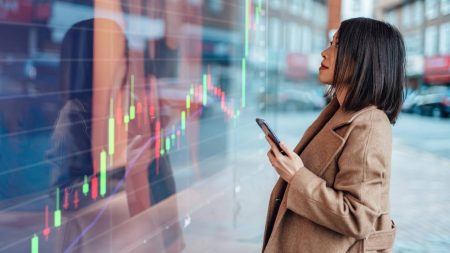High-yield dividend funds are an attractive way to invest. You get what can be a highly stable payout from a diversified collection of securities. The best high-yield exchange-traded funds (ETFs) can offer a growing payout year after year, making them a great way to generate passive income.
(If you’re looking for a passive income stream, you may want to consider hiring a financial advisor, who can help you create a plan based on your individual needs, time horizon and risk tolerance.)
Here are some of the best high-yield ETFs for passive income, including their yield and costs.
Top high-yield funds
Below are some of the best high-yield ETFs that you may want to consider for your portfolio. The funds below include those that meet the following criteria:
- A distribution of at least 6 percent
- No leveraged or inverse funds
- An expense ratio less than 0.5 percent
- Positive total return over the last three years
| Fund (Symbol) | Yield | Expense Ratio |
|---|---|---|
| SPDR Portfolio High Yield Bond ETF (SPHY) | 7.7 percent | 0.05 percent |
| SPDR Bloomberg Short Term High Yield Bond ETF (SJNK) | 7.4 percent | 0.40 percent |
| iShares High Yield Systematic Bond ETF (HYDB) | 7.1 percent | 0.35 percent |
| Global X MLP ETF (MLPA) | 6.8 percent | 0.45 percent |
| iShares iBonds 2025 Term High Yield & Income ETF (IBHE) | 6.8 percent | 0.35 percent |
| Fidelity Enhanced High Yield ETF (FDHY) | 6.6 percent | 0.35 percent |
| iShares Fallen Angels USD Bond ETF (FALN) | 6.3 percent | 0.25 percent |
High-yield ETFs: What to know before investing
Owning a high-yield dividend ETF can be attractive if you’re looking to generate passive income. It doesn’t get any easier than waking up to find a dividend in your account. But you still need to know what you’re investing in and how it all works.
A high-yield ETF invests only in securities that pay distributions, but depending on the kind of fund, it may invest in stocks, bonds or even preferred stock to generate income. The fund’s strategy will list the types of securities that it invests in and the general approach it takes.
Once you select a fund, the investments in it will generally follow that specific approach. For example, if you buy a high-yield bond ETF, the investments will be bonds, and the fund’s price will respond as if it were a bond (i.e., rising when prevailing interest rates fall and vice versa).
Some funds may invest in all asset classes (stocks, bonds, preferred stocks, etc.), while others are more selective. Some strategies are limited to specific industries, while others may take a broadly diversified approach, buying across industries, company sizes and so on.
Need an advisor to help you build passive income?
Bankrate’s AdvisorMatch can connect you to a CFP professional to help you achieve your financial goals.
How to invest in high-yield ETFs
If you look only at a fund’s high yield, you may be tempted to buy on that factor alone, especially compared to the yield on a savings account or CD, even the highest-yield accounts. But you need to consider a variety of things before buying any ETF.
- What does the fund invest in? It’s vital to understand what a fund invests in, so that you know the potential risks of investing in it. Is it a bond fund and therefore exposed to rising interest rates? Is it a stock fund and therefore likely to be more volatile than a bond fund? A broadly diversified portfolio offers less risk than a narrow, one-industry fund.
- How large is the dividend? A fund with a large dividend likely won’t deliver significant capital gains over time. But that may be worth the trade-off if you’re looking to generate income today. On the other hand, it may make sense to go with a lower-yielding but growing dividend, which will increase your annual payout and principal over time. The best dividend ETFs strike a balance between high yield today and growth tomorrow.
- How sustainable is the dividend? A dividend that is massive (think: more than 8 percent) may signal that it’s unsustainable. If the dividend is unsustainable, the fund’s price will likely decline over time, meaning you’ll end up a net loser on the investment. Some funds use option strategies to juice their payouts, but those strategies won’t be available or profitable all the time, so the distribution is likely to fall. Similarly, funds using debt to boost their payout often have to cut the payouts, meaning a lower price.
- What is the long-term track record? You want to check how the fund has done over time, and the longer the track record, the better. Also, be wary of funds where the dividend is a lot larger than the fund’s average annual performance. That means you’re getting paid, but the value of the fund is declining, meaning you’re losing money overall.
- What is the expense ratio? You also want to look at the fund’s expense ratio. It’s the percentage of your investment in the fund that you’ll pay as a fee. You’ll pay this fee regardless of how the fund performs, and you have many ways to get a low fee.
An experienced financial advisor can also help you build an income portfolio that meets your needs.
Bottom line
If you’re looking exclusively for the highest-yielding ETFs, you’ll want to be extra careful to find a sustainable payout. It can be worthwhile to settle for a somewhat smaller yield today for the potential safety and growth of the fund over time, helping you grow your money in the long run.
Editorial Disclaimer: All investors are advised to conduct their own independent research into investment strategies before making an investment decision. In addition, investors are advised that past investment product performance is no guarantee of future price appreciation.
Read the full article here










